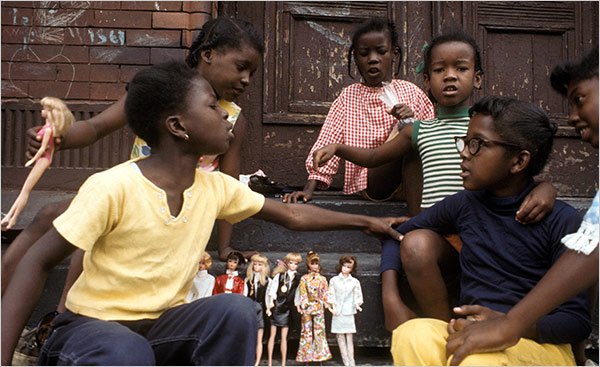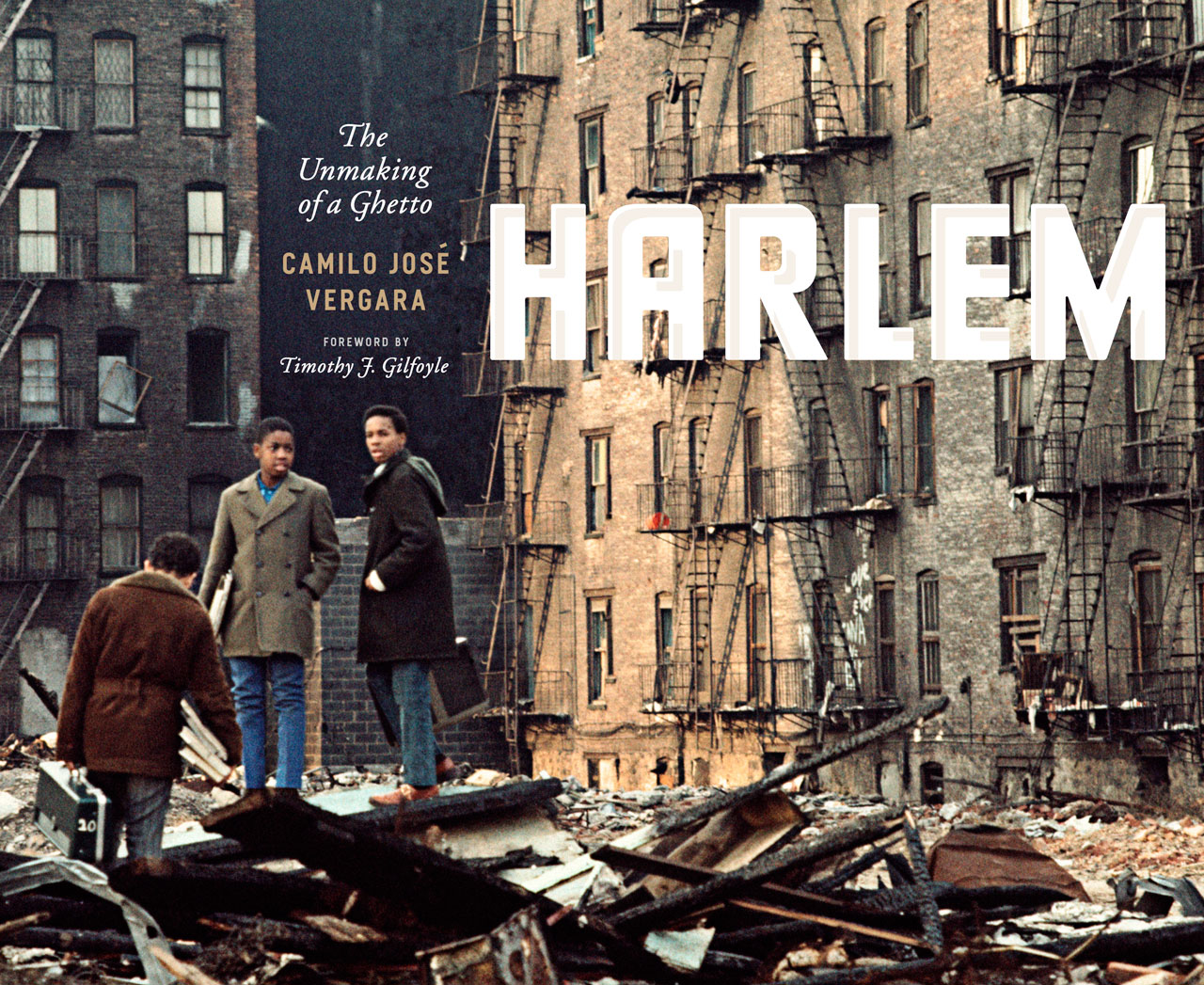Harlem: The Unmaking of a Ghetto
Camilo José Vergara is the kind of person of whom it might be said, “the epithet ‘polymath’ wouldn’t be cliché.” His photographic work, which often applies a time-lapsed and documentary style to the de-urbanization of American cityscapes, is both complicated and mirrored by his interests as a sociologist and ethnographer, themselves often focused on fracture, erosion, decline, and transformation. In 2002, he won a MacArthur Foundation “genius grant,” which cemented his reputation as one of our foremost chroniclers of the “urban.” His most recent book Harlem: The Unmaking of a Ghetto, sees him returning to many of the same locations over the course of decades (beginning in 1970) in order to document a community that is constantly changing, demographically and architecturally.
From a recent Publishers Weekly starred review of the book:
MacArthur Fellowship recipient Vergara’s archival stills are full of movement; the historic Baby Grand becomes King Party Center, a gift store, and then a Radio Shack. An ordinary address, 65 East 125th Street, first photographed in 1977, is transformed over the course of 13 photographs, becoming the Grocery Candy Smoke Shop, then a Sleepy’s, and finally, in 2011, a church. . . . To experience Vergara’s photos is to live, for a spell, in Harlem.
Harlem includes Vergara’s own writings about his project, which extends its verité depictions into a literal “accounting” of the shifting realities and sensibilities of America’s would-be archetypal inner-city neighborhood, in all its authentic complexity.

For more information about Harlem: The Unmaking of a Ghetto, go here.
To gain an understanding of the breadth and depth of the artist’s work, visit his website here.
To see more of Vergara’s photographs, many of which are featured in the book, click on this slideshow at the NYT‘s site.
